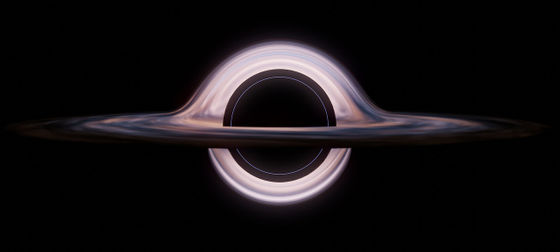Research results show that the true identity of a black hole is a star 'Glavaster' made of dark energy

Black holes are celestial objects whose existence was deduced in 1915 by Einstein's general theory of relativity, and in 2019 they were finally
Phys. Rev. D 109, 084002 (2024) - Observational imprints of gravastars from accretion disks and hot spots
https://journals.aps.org/prd/abstract/10.1103/PhysRevD.109.084002
Black hole singularities defy physics. New research could finally do away with them. | Live Science
https://www.livescience.com/space/black-holes/black-hole-singularities-defy-physics-new-research-could-finally-do-away-with-them
Black holes are celestial objects predicted by German physicist and astronomer Karl Schwarzschild using Einstein's general theory of relativity. Although many astronomical phenomena have been found over the years that support the existence of black holes, there are still some flaws in Schwarzschild's description that remain unresolved.
One of these is the existence of a ' singularity ' located at the center of a black hole, a region where gravity and density become infinite. Fundamental physics dictates that infinity should not exist, and if infinity appears in any theory, the theory is deemed to be incorrect or incomplete.
So, as an alternative to singular black holes, the so-called 'gravitational vacuum star,' or Gravastar, was devised.
João Luis Rosa, a professor of physics at the University of Gdansk in Poland, explained about Gravaster, 'The problems with black holes indicate that something in the theory is wrong or incomplete, so alternative models have been needed. Gravaster is one such alternative model, and its biggest advantage is that it does not require a singularity.'

Like black holes, gravasters are born from massive objects that eventually collapse when the energy they emit can no longer overcome gravity. Instead of a singularity like a black hole, a gravaster is thought to have a thin, spherical shell that is kept stable by dark energy.
Therefore, Rosa said, Gravaster can be considered a star made of antigravity energy, the energy that is accelerating the expansion of the universe, that is,
In a study published in April 2024 in the journal Physical Review D, Rosa and his team analyzed how the giant clumps of hot material surrounding a supermassive black hole would behave if it were a gravaster. The team also investigated the properties of 'hot spots,' clumps of hot gas orbiting the black hole at close to the speed of light.
The results suggest that the gravastar is consistent with previous observational records, that there are striking similarities between the ejection of matter caused by black holes and gravastars, and that the gravastar casts a shadow similar to that cast by a black hole.

In the black hole model, such shadows are said to be caused by light being trapped in an event horizon formed by the distortion of space, but in gravitational stars, which have no event horizon, shadows are instead created by a different phenomenon called gravitational redshift .
Gravitational redshift is the phenomenon in which the wavelength of light becomes longer in a gravitational field. When light passes through the strong gravitational field of a Gravaster, it loses energy, and so when observed from the outside, it appears as a black shadow like that created by a black hole.
Rosa and his team's research suggests that Gravasters could be a substitute for black holes, but this theory needs to be confirmed by observation. 'We look forward to the next generation of observational experiments, such as the Event Horizon Telescope, which searches for black holes, and the new GRAVITY+ at the European Southern Observatory in Chile, to experimentally verify our results,' Rosa said.
Related Posts:
in Science, , Posted by log1l_ks







